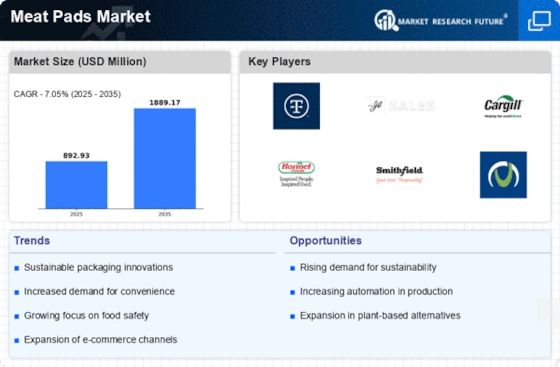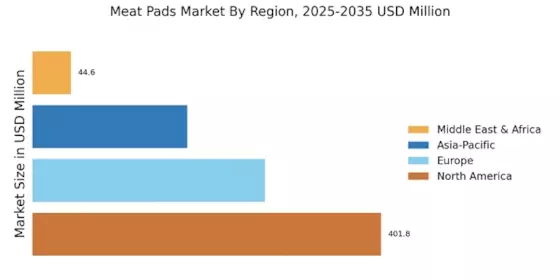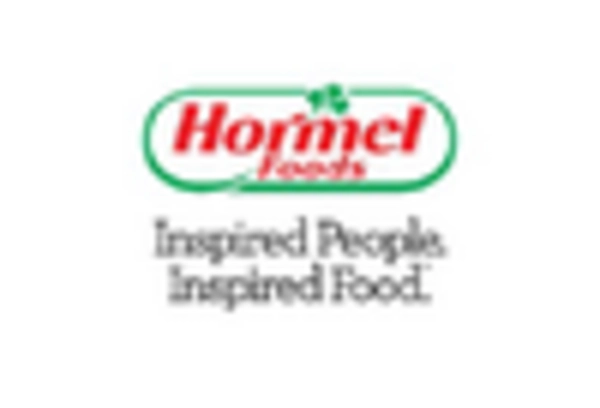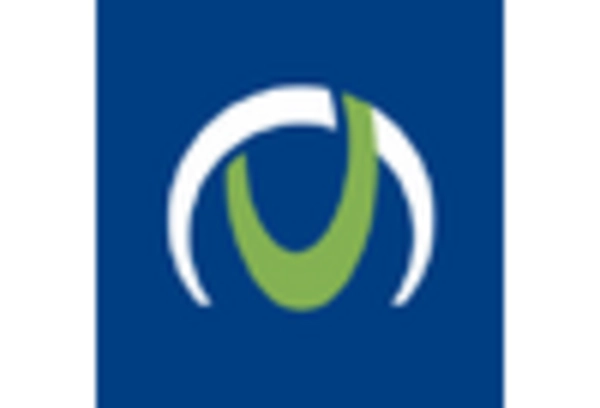Health and Wellness Trends
The Meat Pads Market is influenced by the rising health and wellness trends among consumers. There is an increasing awareness regarding food safety and hygiene, leading to a preference for products that ensure these aspects. Meat pads, designed to minimize contamination and maintain meat quality, are becoming essential in households and food service establishments. Market data indicates that the health-conscious consumer segment is expanding, with a significant portion of the population prioritizing safe food handling practices. This trend is expected to bolster the Meat Pads Market as more consumers seek reliable solutions for meat storage and preparation.
Innovations in Packaging Technology
Innovations in packaging technology are playing a crucial role in the Meat Pads Market. Advanced materials and designs are being developed to enhance the shelf life and safety of meat products. For instance, vacuum-sealed meat pads are gaining traction as they help in preserving freshness and preventing spoilage. The packaging sector is projected to grow at a rate of 5% annually, which could positively impact the Meat Pads Market. As manufacturers adopt these innovative packaging solutions, they are likely to attract more consumers who are concerned about product quality and longevity.
Rising Demand for Convenience Foods
The Meat Pads Market is experiencing a notable increase in demand for convenience foods. As consumers lead busier lifestyles, the preference for ready-to-cook and easy-to-use meat products is growing. Meat pads, which offer a hygienic and efficient way to handle and store meat, align well with this trend. According to recent data, the convenience food sector is projected to grow at a compound annual growth rate of approximately 4.5% over the next few years. This growth is likely to drive the Meat Pads Market as manufacturers innovate to meet consumer needs for convenience and quality.
Increased Focus on Food Safety Regulations
The Meat Pads Market is also shaped by the increased focus on food safety regulations. Governments and regulatory bodies are implementing stricter guidelines to ensure the safety and quality of meat products. This regulatory environment is pushing manufacturers to adopt better practices in meat handling and storage, including the use of meat pads. Compliance with these regulations is essential for market players, as non-compliance can lead to significant penalties. Consequently, the Meat Pads Market is expected to grow as businesses invest in safer and more efficient meat handling solutions to meet regulatory standards.
Expansion of Retail and Food Service Sectors
The expansion of retail and food service sectors is a driving force behind the Meat Pads Market. As the food service industry continues to grow, there is an increasing need for efficient meat handling solutions. Retailers are also focusing on providing high-quality meat products, which necessitates the use of meat pads for proper storage and presentation. Recent statistics suggest that the food service sector is expected to grow by 6% annually, which could lead to a corresponding increase in demand for meat pads. This trend indicates a promising outlook for the Meat Pads Market as it aligns with the evolving needs of both retailers and food service providers.


















Leave a Comment